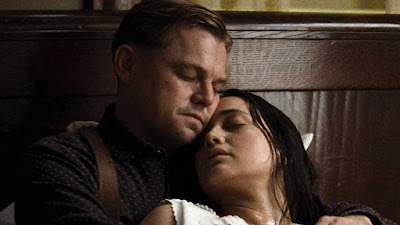The park is the source of such a cataclysmic hot spot on earth that the ash in Nebraska was about 10 feet deep. And those massive volcanoes at Yellowstone happen every six hundred thousand years. Oh, and by the way, it’s been six hundred thousand years since Yellowstone blew hard.
If that’s not bleak enough for you, then consider that we know lots more about the sun’s core than we do the middle of the Earth. “If the planet were an apple, we wouldn’t yet have broken through the skin,” via our various mining operations, writes Bill Bryson in his classic A Short History of Nearly Everything. (I also wrote about the geology section of the book back in 2022.)
We hear a lot about the Richter scale, which is less an actual scale and more an idea about the power of individual earthquakes. It’s named after Charles Richter who was at Caltech the 1930s. Since that time, the two largest quakes measured were both in the low 9s, centered in Alaska in 1964 and in the ocean near Chile in 1960. Just a little less powerful was the one in 1755 that destroyed Lisbon, Portugal. Sixty-thousand people died and virtually all the buildings there crumbled.
Tokyo could consider a new marketing slogan as “the city waiting to die” because it sits on three tectonic plates. It suffered a big quake in 1923 that killed 200,000 people. If that happened today, the economic cost would exceed $7 trillion, which, give or take, is about one-tenth of all the money that exists in the world.
Less understood are earthquakes called intraplate quakes, which aren’t close to plate boundaries, come from much deeper underground, and are completely unpredictable. The three worst of this kind all happened in the winter of 1811-1812 in New Madrid, Missouri (yes, the place Uncle Tupelo sang about). These quakes caused chimneys to fall in Cincinnati, wrecked boats docked on the East Coast, and toppled scaffolding on the U.S. Capitol building in Washington, D.C. Such quakes “are as random as lightning” and “have never been known to happen in the same place twice.”
Moving deeper down to the Earth’s core, scientists - basically - don’t know much:
- They know that there is liquid that causes magnetism (unlike the Moon and Mars, which don’t have magnetic fields).
- They know that the magnetic field changes and was three times more powerful during the time of the dinosaurs than it is now.
- They know the field reverses itself about every 500,000 years. We don’t really want to be around during one of these reversals because cosmic rays from space will do a serious number on us at that point. For now, the field protects us. I guess you could say we are one with the Force.
In 1980, the world was captivated for two months while it appeared Mount St. Helens in Washington state was going to erupt. Finally it did and “it was the biggest landslide in human history and carried enough material to bury the whole of Manhattan” in about 400 feet of ash. Fifty-seven people died, which was lucky because it was a Sunday and many timber workers were not in the death zone. About 80 miles away, in the town of Yakima, Washington, ash turned the streets to dark in a place that had no emergency plan or emergency broadcast system because the Sunday-morning staff didn’t know how to work the equipment. Yakima was completely shut down for three days, and it had received less than an inch of ash.
“Now bear that in mind, please," Bryson writes, "as we consider what a Yellowstone blast would do.”











